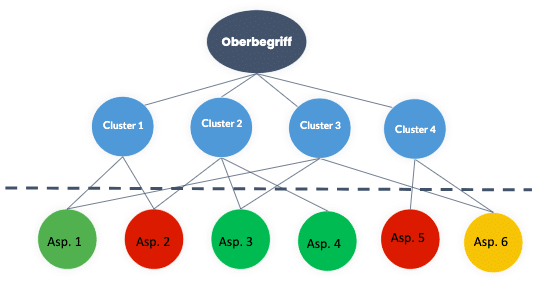How companies can make Customer Centricity measurable for themselves
Insights into our research project with LMU and IUBH.

In the last ten years, the topic of customer centricity has occupied many industries and companies. New technologies have been purchased by companies and ideas have been implemented. However, one crucial point has not been solved.
The investments have not helped companies to make Customer Centricity measurable. The degree of customer centricity is also difficult to measure because it correlates with individual customer satisfaction and preferences. To make this possible, marketers would have to analyze all available customer voices in detail and from many different sources. The task can only be accomplished to a limited extent through manual work or classic market research. Just evaluating and summarizing 1,000 customer testimonials is hardly manageable, especially if it has to be done daily.
Many of our customers have therefore come to appreciate the value of Insaas.ai, which is our contribution to existing data and technology. During several customer projects, we have found that companies are interested in customer feedback, but cannot easily apply it in their daily work. The results are often too heterogeneous. A list of topics combined with a positive, negative or neutral sentiment is difficult to relate to customer centricity and customer satisfaction. Therefore, our approach is to sort the individual voices and group them into categories. For the term “service”, it might look like this:

However, this approach does not solve the problem of measuring Customer Centricity. For Deloitte, Customer Centricity is based on the value that a product and service have for a customer. But how can this “value” be defined and calculated in order to measure Customer Centricity?
Ultimately, it is about the measurable added value of services and products according to the customer. It’s about listening to the customer and measuring whether the “job to be done” has really been done. Put another way:
“A truly customer-centric organization takes a systematic approach, talking to customers to create a fact-based assessment of what customers want and which things they value over others.” (A customer-centric approach to commercial excellence)
Therefore, the measurement of customer centricity focuses on two main categories: the service and the product. For these clusters, we have defined four subcategories each, based on the research of Prof. Mischa Kolibius (IUBH), to describe the two categories. In this way, our software solution is able to assign the individual voices to clusters such as service and product with the respective sentiment.
The result is a graph showing public feedback compared to competitors. We call this approach the “Customer Centricity Graph”.

We are currently working on a project for German car insurers. First, we research the sources where customers talk about their car insurance. Then we define a list of the most popular insurance brands in Germany and collected more than 300,000 votes from 100 different sources, including aggregators, forums, blogs, portals and app stores.
With this information, we started a research project with Ludwigs-Maximilians-University Munich to predict entities and sentiment and automatically calculate the Customer Centricity Graph. Our focus is on lemmatizing and correctly classifying the context for each feedback. As a result, we will create a dashboard to measure and filter the graph according to the sources.
In this way, Customer Centricity will become measurable and could become a common metric. We expect that the “Customer Centricity Graph” will be very relevant for industries such as insurance, retail and software and can positively influence the optimization of products and services. Further results of our work will be published soon.


